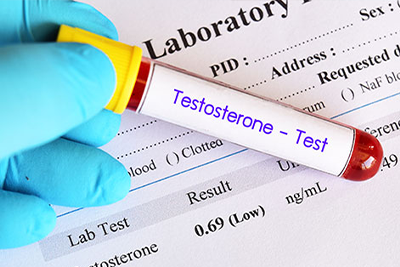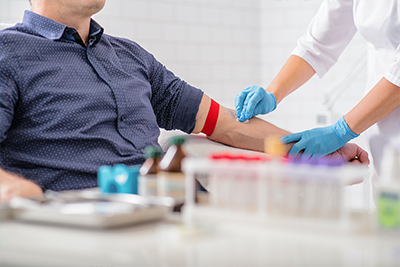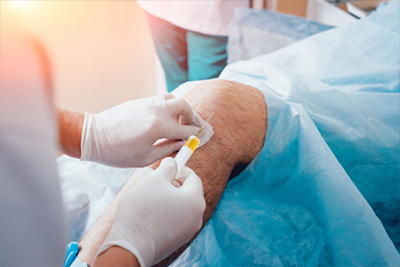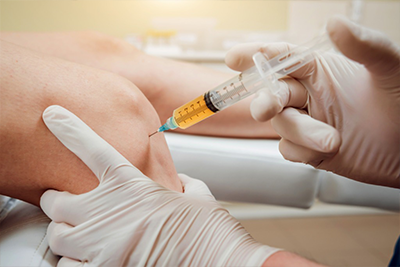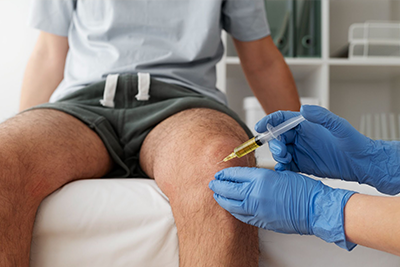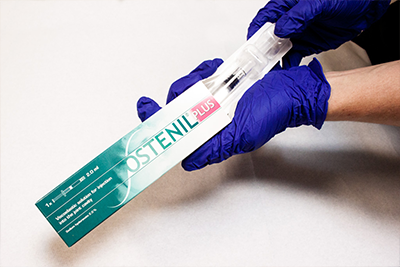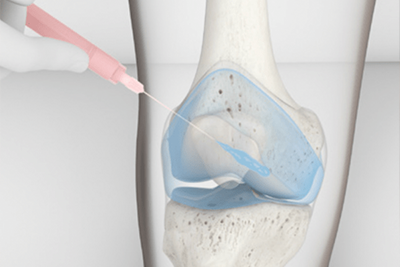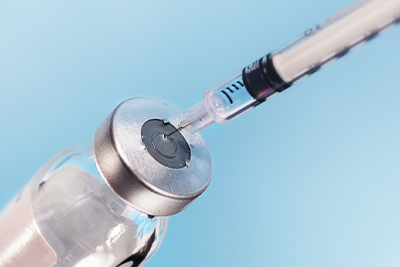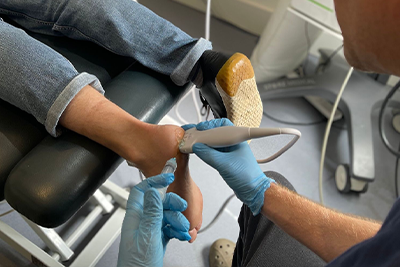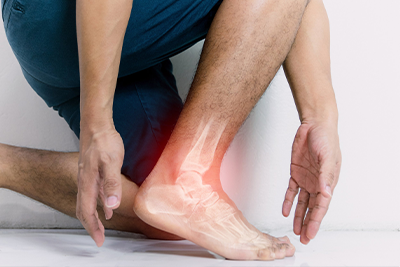Peyronie’s disease is a condition in which scar tissue, also known as plaque, forms on the shaft of the penis. This can cause the penis to bend or become curved during erections.
The exact cause of Peyronie’s disease is unknown, but it is thought to be the result of trauma or injury to the penis. Other possible causes include genetics, connective tissue disorders, and inflammation.
Peyronie’s Symptoms
The symptoms of Peyronie’s disease can vary from person to person, and some men may not experience any symptoms at all. However, the most common symptoms of Peyronie’s disease include the following:
- Curvature of the penis: One of the most noticeable symptoms of Peyronie’s disease is a curve or bend in the penis during erections. The degree of curvature can vary, and it may be more pronounced when the penis is erect than when it is flaccid.
- Pain or discomfort during erections: Men with Peyronie’s disease may experience pain or discomfort in the affected area of the penis during erections. This pain may be mild or severe, and a burning or aching sensation may accompany it.
- Difficulty achieving or maintaining an erection: Peyronie’s disease can make it more difficult to achieve or maintain an erection. This may be due to the pain or discomfort caused by the condition, or it may be caused by psychological factors such as anxiety or depression.
- Lumps or problematic areas on the penis: Men with Peyronie’s disease may feel lumps or hard areas on the affected area of the penis. These lumps may be small or large and tender to the touch.
- Shortening of the penis: In some cases, Peyronie’s disease can cause the penis to shorten. This may be due to the curvature of the penis or scar tissue formation.
It is important to note that Peyronie’s disease can significantly impact a man’s quality of life, and it can affect a man’s sexual function and self-esteem. If you are experiencing symptoms of Peyronie’s disease, and discuss your treatment options with a medical professional.
Peyronie’s Stages
Different stages of progression typically characterise Peyronie’s disease. The stages of Peyronie’s disease include:
- Acute stage: This is the initial stage of Peyronie’s disease, and it typically lasts for several months. During this stage, the penis may be swollen and tender to the touch, and there may be a noticeable bend or curve in the penis during erections. Men may also experience pain or discomfort during erections.
- Subacute stage: This stage typically lasts for several months to a year. During this stage, the pain and discomfort may subside, and the plaque or scar tissue may begin to harden. The curvature of the penis may also become more pronounced.
- Chronic stage: This is the final stage of Peyronie’s disease, and it typically lasts for several years. During this stage, the plaque or scar tissue is usually stable, and the curvature of the penis is unlikely to change. Men may still experience pain or discomfort during erections, but this is usually mild.
Not everyone will go through all three stages, and some may not experience any symptoms. Additionally, some people may experience symptoms that are different from what is typically associated with each stage.
Peyronie’s Diagnosis
The diagnosis of Peyronie’s disease typically involves a physical examination by a specialist in men’s health, such as a urologist or andrologist. During the examination, they will look for signs of plaque or curvature of the penis. They may also ask about symptoms, such as pain or difficulty achieving or maintaining an erection.
In addition to a physical examination, your healthcare provider may use one or more diagnostic tests to help confirm the diagnosis of Peyronie’s disease. These tests may include the following:
- Ultrasound: An ultrasound uses sound waves to create images of the inside of the penis. This test can help to identify any plaque or scar tissue that may be present.
- X-ray: A special X-ray called a penile duplex Doppler ultrasound can be used to create detailed images of the blood vessels and blood flow in the penis. This test can help identify blockages or other problems contributing to Peyronie’s disease.
- MRI: An MRI (magnetic resonance imaging) uses a magnetic field and radio waves to create detailed images of the inside of the penis. This test can help to identify any plaque or scar tissue that may be present and can also help to rule out other conditions that may be causing similar symptoms.
- Biopsy: In some cases, a small sample of tissue may be taken from the affected area of the penis for examination under a microscope. This test can help to confirm the diagnosis of Peyronie’s disease and to rule out other conditions.
Peyronie’s Treatment
Treatment options for Peyronie’s disease vary depending on the severity of the condition and the individual’s symptoms. In many cases, the state may improve or stabilise without any treatment. However, for those who are experiencing significant pain, difficulty achieving or maintaining an erection, or other significant symptoms, treatment options may include the following:
Non-surgical treatment:
- Low-Intensity Shockwave Therapy (LiSWT): This treatment uses sound waves to stimulate blood flow and promote healing in the affected area. It is relatively non-invasive and can help reduce pain and improve erectile function.
- Penile injections: Certain medications, such as verapamil, collagenase, interferon alpha-2b, etc., can be injected directly into the plaque to soften it. This can help to reduce pain and improve erectile function.
- Oral medications: certain medications such as vitamin E, potassium para-aminobenzoate (Potaba), tamoxifen, colchicine, etc., can be taken orally to help reduce the plaque size and improve the curvature.
Surgical treatment:
Surgery is usually reserved for severe cases of Peyronie’s disease, where other treatments have failed to improve symptoms or the curvature is causing significant functional impairment. Surgery options include:
- Plaque incision and grafting: This procedure involves making an incision in the plaque to remove the scar tissue and then using a graft to repair the defect.
- Penile prosthesis: This procedure involves implanting a device inside the penis to help achieve and maintain an erection.
- Penile straightening surgery: This procedure can be used to correct severe curvature of the penis by removing some of the tissue from one side of the penis.
Most cases of Peyronie’s disease will not require treatment, recovery times and effectiveness vary, and there is no guarantee that the treatment will be successful.
As well as medical treatment, lifestyle changes such as weight loss, avoiding smoking and excessive alcohol consumption, stress management, and regular exercise can also help manage symptoms.
Peyronie’s NHS
Treatment options for Peyronie’s disease available on the NHS vary depending on the severity of the condition and the individual’s symptoms. The NHS will usually offer various non-surgical treatment options before considering surgery.
Non-surgical treatment options that are available on the NHS include:
- Low-Intensity Shockwave Therapy (LiSWT)
- Oral medications such as Potassium para-aminobenzoate (Potaba)
- Verapamil injections
- Vitamin E supplements
- Consultation with a specialist in men’s health to discuss the best treatment options
Surgical treatment options such as Penile prosthesis and Penile straightening surgery may also be considered for severe cases of Peyronie’s disease, where other treatments have failed to improve symptoms or the curvature is causing significant functional impairment. Still, it is not as common as non-surgical treatment options.
The NHS has a limited budget, so the availability of specific treatments may vary depending on your area and specialists’ availability.
Peyronie’s Disease FAQs
What is Peyronie’s Disease?
Peyronie’s disease is a condition in which scar tissue, also known as plaque, forms on the shaft of the penis. This can cause the penis to bend or become curved during erections.
What causes Peyronie’s Disease?
The exact cause of Peyronie’s disease is unknown, but it is thought to be the result of trauma or injury to the penis. Other possible causes include genetics, connective tissue disorders, and inflammation.
What are the symptoms of Peyronie’s Disease?
Symptoms of Peyronie’s disease include a curve or bend in the penis during erections, pain or discomfort during erections, difficulty achieving or maintaining an erection, and lumps or hard areas on the penis.
How is Peyronie’s Disease diagnosed?
Diagnosis of Peyronie’s disease typically involves a physical examination by a healthcare provider. In some cases, an ultrasound or other imaging tests may be used to help confirm the diagnosis.
What are the treatment options for Peyronie’s Disease?
Treatment options for Peyronie’s disease include Low-Intensity Shockwave Therapy (LiSWT), penile injections, surgery, and lifestyle changes such as weight loss, avoiding smoking and excessive alcohol consumption, stress management, and regular exercise.
Is Peyronie’s Disease a common condition?
Peyronie’s disease is considered a relatively uncommon condition, affecting about 0.5 to 3% of men in the general population. However, the exact prevalence of Peyronie’s disease is difficult to determine, as many men may not seek medical attention.
Can Peyronie’s Disease be cured?
There is no known cure for Peyronie’s disease, but treatment options can help to improve symptoms and reduce the curvature of the penis. Sometimes, the condition may improve or stabilise over time without any treatment.
Can Peyronie’s Disease affect sexual function?
Peyronie’s disease can affect a man’s sexual function, as the curvature of the penis can make it more difficult to achieve or maintain an erection, and pain or discomfort during erections can be a problem.
Can Peyronie’s Disease be prevented?
It is not known how to prevent Peyronie’s disease, but avoiding injury to the penis and managing underlying health conditions that may increase the risk of developing the condition, such as diabetes or Dupuytren’s contracture, may decrease the likelihood of developing it.
Will all treatments be available on the National Health Service (NHS)?
Treatment options available by the National Health Service (NHS) in the UK vary depending on the severity of the condition and the individual’s symptoms. Some treatments may be more readily available than others, and it may vary depending on the area you live in and the availability of the specialists.
Related Articles
- Testosterone Replacement Therapy (TRT) – What You Need To Know
- P-Shot Treatment for Erectile Dysfunction
- Understanding the Link Between Testosterone and Erectile Dysfunction
- Exercise for Peyronie’s Disease: Managing the Symptoms
- Shockwave Therapy as a Treatment for Erectile Dysfunction


